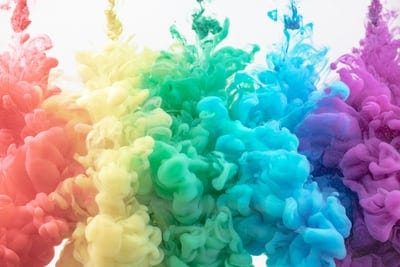Colors of Hydrogen
Hydrogen is an odorless, colorless gas that is imperceptible to the human senses. Hydrogen is not available naturally; its low density means that any hydrogen in the atmosphere immediately escapes to space. This means that it has to be produced using an external source of energy. (This is an important point — hydrogen is not an energy source, it is merely a carrier of energy produced by other means or from other sources.)
Different colors are used to describe the ways in which hydrogen is manufactured. The assignment of color names is somewhat arbitrary, hence different organizations are not always consistent with one another. They system that we use is explained here.
Black and Brown Hydrogen
Black and brown hydrogen are produced from coal, with black being bituminous coal and brown being lignite. Some “bottom of the barrel” refinery products, such as recycled lube oil, can also be described as being sources of black or brown hydrogen.
Black, brown and gray hydrogen are all manufactured in a steam reforming process that creates CO2 as a byproduct that is discharged into the atmosphere. It is how almost half of the world’s hydrogen is produced currently (most of the remainder comes from byproducts of the chemical industries (Purrucker, 2021).
Gray Hydrogen
The most widely used source of hydrogen is natural gas (methane, CH4). Hydrogen produced this way is referred to as being gray, as is hydrogen produced from LPG (liquefied petroleum gas).
Blue Hydrogen
Blue hydrogen starts as black, brown or gray, but the CO2 created during the manufacturing process is not discharged to the atmosphere. Instead, it is captured and sequestered (i.e., stored underground).
Blue hydrogen is favored by many oil companies because it allows them to continue the production and use of methane. They are not faced with the problem of stranded assets. It is sometimes referred to as being a transition fuel because it is one step between black/brown hydrogen and the ultimate goal: green hydrogen.
Green Hydrogen
Green hydrogen is produced using renewable sources of electricity. There are no CO2 emissions. (There may, however, be emissions of nitrogen oxides. These can be potent greenhouse gases.)
Turquoise and Pink Hydrogen
Two other colors are sometimes used. Turquoise hydrogen is produced using methane pyrolysis technology. Pink hydrogen is produced using energy provided by a nuclear power plant.
At the end of the day, the choice of color name is no more than a convenience, and different sources will assign different meanings to the color names. What is important is that the production of hydrogen should not emit greenhouse gases.





